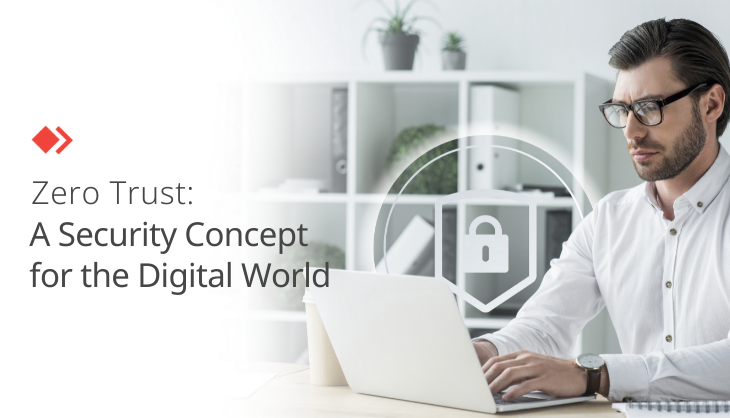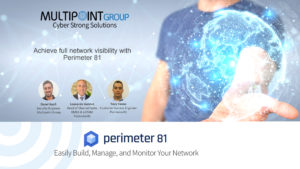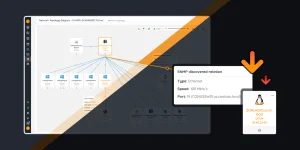Why We Need to Rethink Cyber Security as We Know It
The digital world is changing faster than ever. We are constantly connected online and the number of electronic devices and online services we are consuming daily is steadily increasing. This digital transformation also affects our jobs and work environments. With more and more people working remotely, the way we work has changed along with the security requirements businesses need to fulfill to prevent cyber threats on all levels.
Over the last few years, Zero Trust has emerged as a cyber security strategy, introducing a new security architecture for the interconnected, digital world. Especially since the start of the pandemic, this term has become more prevalent. This blog post will take a closer look at what Zero Trust is and why businesses are urged to adopt this security concept rather today than tomorrow. Discover how Remote Desktop Software can help to establish Zero Trust principles, supporting enterprises to prepare for the security challenges of the digital age.
What Is Zero Trust?
“Trust no one” – This motto might sound familiar to X-Files fans who have followed FBI agents Mulder and Scully on their paranormal adventures in the mid to late 90s. Zero Trust in network and cyber security reflects just that motto: Do not trust anyone outside and inside your organization by default, even if a user, device, or application operates within the trusted company network. Zero Trust is a security strategy that reacts to new challenges that have come with digitization, which is especially important for businesses.
When we think back just a few years, the most common notion was that internal company networks are always safe and that all connections, devices, users, and software coming from within this internal network can be automatically trusted. If a hacker tried to attack, he would most likely do so from an external outside source. The focus lay on perimeter security where you seal off your network from the outside world and fight off intruders at the gates.
However, these old ways of thinking about network security are outdated and perimeter security alone is becoming more and more ineffective against today’s cyber threats. What has worked in the 90s when network structures were simpler and devices less connected no longer harmonizes with today’s complex online world. Today, everything is interconnected, cloud services are on the rise, and Remote Work has become popular, leaving company networks more vulnerable than ever and blurring the definition of what we can define as a perimeter.
Also, the past has shown that cyber threats can most definitely come from inside a sealed-off company network. This can be deliberate (in case of an employee gone rogue) or unintentional (accidentally installed malware, or scammers seeming a tad bit too trustworthy). Oftentimes, employees are the weak link, which is why security measures need to be as close to the people as possible. This is where the Zero Trust strategy comes in, providing businesses with security guidelines that are intended to prevent cyber-attacks and minimize the vulnerability of company networks.
How Does Zero Trust Work?
Zero Trust is a user-centric security strategy. At its core, it implies that neither the user nor the device is trustworthy, from CEO to customer service representative. The concept is built mostly on 3 main pillars and seeks to repeatedly confirm the identity of an employee for all major transactions and access requests. Restricting access to sensitive data and always assuming a security breach could happen at any minute also fall under Zero Trust.
Let’s have a closer look at each pillar for more details on what this security concept could look like in a day-to-day business environment:
Pillar I – Always Verify Users and Devices
Which employee is actually logging into the company’s VPN connection right now and from which device? Are users really who they claim to be just because they are wearing a company badge? Zero Trust questions that fact (“never trust, always verify”), considering it rather naïve to think that a badge or email address and password are unique and safe ways to prove one’s identity.
Devices and badges can get stolen, credentials can be hacked. Enforcing a multi-layer authentication to reconfirm the identity of employees and their devices with every connection attempt adds additional security and assures that access is only granted to authorized individuals.
Pillar II – Access Restriction
Surely, not every employee needs access to all company data that exists. Zero Trust Network Access (ZTNA) sees unrestricted access as a potential risk and aims at implementing the least privileges by network segmentation, managing user rights, and restricting access for users to only the most essential information, so the impact of a cyberattack can be reduced.
A customer service representative, for instance, will most likely not require access to the accounting system and the latest annual balance sheet. If privileges and access are only granted based on the individual responsibilities of an employee within the company, the damage in case of a security breach can be repaired more easily.
Pillar III – Prepare for the Worst-Case Scenario
In a Zero Trust world, businesses prepare for the worst-case scenario and implement plans for possible data breaches. They train their employees on how to react and practice these scenarios regularly. Over the last few years, we have seen that enterprises and even governmental institutions run the risk of becoming victims of cybercrime and that it is not a question of IF it ever happens but rather WHEN.
Zero Trust and Remote Desktop Software
It is important to understand that when we speak about a Zero Trust security model, we speak of a strategy and that there is no universal security software or product that can be bought to “roll out” Zero Trust in a business from one central point. When companies decide to follow Zero Trust principles, they implement guidelines and reconfigure their existing security infrastructure to match this new strategy.
Therefore, new and existing software should allow businesses to adopt Zero Trust on application level. Professional Remote Desktop Software, for instance, provides a variety of security features that can help companies with the implementation of Zero Trust, especially when it comes to a secure Remote Work environment in which many employees use their own private devices and consumer-grade routers to remotely access their workstations.
Over the last two years, businesses have invested in VPN and Remote Access Solutions to enable teleworking across departments. Remote Work is here to stay and will continue to shape the corporate landscape, so it is important to choose a Remote Desktop Solution that is able to reflect Zero Trust principles anchored within its own software architecture.
Here are a few security features to look out for when choosing a Remote Desktop Solution to fit into your Zero Trust protocol:
Group Policies and Permission Management
Group Policies allow administrators to manage Remote Access for whole groups of users from one central point. Change settings for all clients, set up new users, implement updates, and tie individual access permissions to certain groups.
Permission Management lets you decide on the degree of access you wish to grant another user accessing your device. These permissions are adjustable to every use case – from simple Screen Sharing to working remotely.
Custom Client
Professional Remote Desktop Software allows you to configure Custom Clients before they are rolled out. Decide what feature sets are relevant for certain user types depending on the responsibilities a user has within your company. Generate “Incoming Only Clients” for Remote Support scenarios and increase your users’ privacy and security.
Unattended Access
Unattended Access is important when it comes to Remote Support and Maintenance. Good Remote Support Software comes with Unattended Access features that guarantee secure access to devices around the clock. Set up a password for accessing the remote machine and enable Two-Factor-Authentication to add an additional security layer.
Whitelist
A Whitelist feature allows you to grant access to your device only to selected users or a certain Namespace, so you decide who is allowed to contact you. That way, users outside your company (Namespace) or license cannot gain access to sensitive data and are blocked from connecting to your device.
2-Factor Authentication
Simply relying on a password to confirm a user is authorized to use a software or device is no longer considered secure. Enterprise-grade software, no matter if it is a Remote Desktop Solution or any other kind of software tool, should always give users the option to apply 2-Factor Authentication for enhanced security.
On-Premises Option
Cloud services are on the rise with data and apps being dispersed in different places. But some institutions have very strict security requirements that software providers need to answer to. Therefore, good Remote Desktop Software always comes with an On-Premises alternative where the software itself is being hosted within the company network sealing sensitive data within.
Military-Grade Encryption
Enterprise-grade Remote Desktop Software comes with the highest security and encryption standards to protect your connections from prying eyes. Do not settle for any solution that does not offer military-grade or banking-level encryption of your connections and data.
Offboarding Guidelines
If employees leave the company, make sure they no longer have access to certain portals or services, including the Remote Desktop Tool you are using. Remote Desktop Tools can be accessed from outside your company. Professional providers, however, will not only guide you through a proper onboarding, but will also instruct you on how to successfully take access rights away and offboard employees that are leaving your business.
Takeaways
Our everchanging digital world requires us to rethink security as we know it and abandon old concepts that have been implemented many years ago. Cyber security measures need to match this new and sophisticated technological landscape to protect businesses from threats inside and outside their premises. Perimeters are no longer defined by the walls of an office as employees work remotely and applications move to cloud environments. Needless to say, this gives cyber criminals more entry points to attack.
Above all, companies need secure technology that can handle risks, support new remote and hybrid work environments, and help to establish a new form of identity and access management. Remote and hybrid work models have been adopted by many businesses and are here to stay. Consequently, Remote Desktop Software needs to become part of the Zero Trust strategy to make Remote Work more secure for both, employers and employees.








